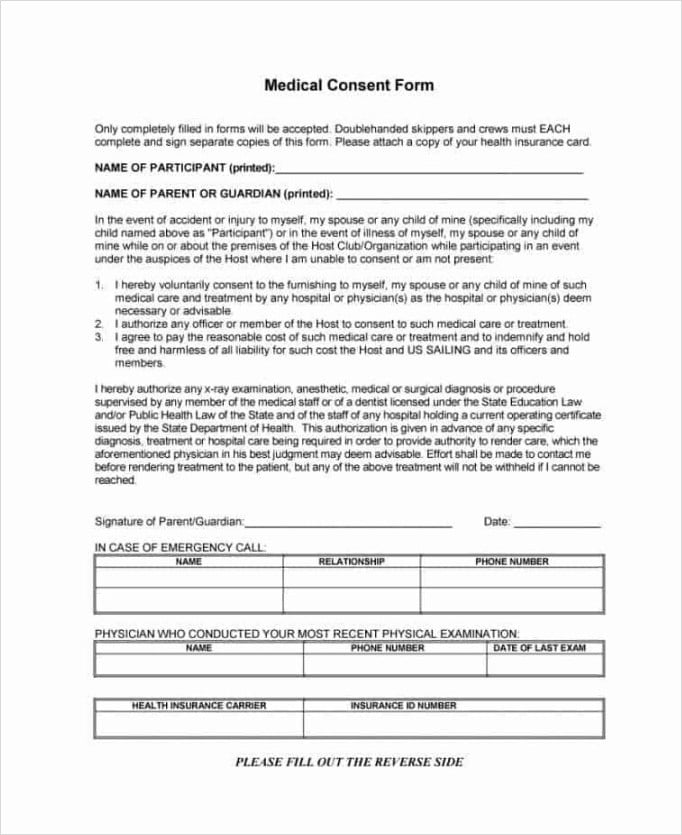When it comes to medical treatment, ensuring that patients are well-informed and have given their consent is paramount. A Printable Medical Consent Form is a crucial document in healthcare, providing patients with the necessary information about proposed treatments or procedures. This form not only outlines the details of the medical intervention but also empowers patients to make informed decisions about their healthcare.
This article will delve into the importance of Printable Medical Consent Forms, their key components, and how they benefit both patients and healthcare providers.

What is a medical consent form?
A medical consent form is a crucial document used in healthcare settings to obtain a patient’s permission before administering treatment or tests. It outlines the patient’s diagnosis, treatment details, benefits, risks, alternative procedures, and the patient’s medical history. This form ensures that patients are fully informed about their healthcare options, empowering them to make decisions regarding their treatment with clarity and understanding.



What should be included in the medical consent form?
In this consent form, it is crucial to include specific details to ensure the patient and the healthcare provider are well-informed. Here is a detailed list:
- Patient’s Details: Name, address, and contact details for unique identification.
- Patient’s Diagnosis: Details of the patient’s diagnosis to provide context.
- Type of Treatment and Purpose: Clearly state the treatment and its purpose.
- Benefits and Risks: List the benefits and risks of the proposed treatment to aid decision-making.
- Alternative Procedures: Include alternative procedures with their respective benefits and risks.
- Potential Consequences: Outline the potential issues the patient may face if they decline the treatment.
- Medical History: Request the patient’s medical history, including allergies, previous diseases, current illnesses, and medications.
- Signature: Obtain the signature of the patient or their legally authorized representative for validity.




Who can sign the medical consent form?
The patient can sign this consent form, the patient’s parents if the patient is a minor, the patient’s legal guardian, or the patient’s authorized representative. An authorized representative can be a friend, spouse, family member, doctor, or any individual the patient chooses to make healthcare decisions on their behalf. It is crucial to have the appropriate individual sign the consent form to ensure the validity of the treatment process.




Principles of using a medical consent form
The principles of using this consent form are crucial in healthcare settings to ensure that patients are fully informed and empowered to make decisions about their treatment. When creating this consent form, several key principles should be followed to uphold the integrity of the consent process:
- Voluntary: The decision to undergo treatment should be made willingly by the patient, free from any external pressure.
- Must be informed: Providing detailed and comprehensive information about the treatment, including benefits and risks, is essential to enable patients to make informed decisions.
- Mentally stable: Patients should be in a mentally stable state when consenting to treatment to ensure they fully understand the procedure, its implications, and potential risks.





Final Thoughts
Having access to well-structured and professionally designed consent form templates in Word and PDF formats is crucial for both healthcare providers and patients. These templates not only ensure that patients are fully informed about their treatment options and risks but also help healthcare providers to document patient consent accurately. By utilizing these downloadable templates, healthcare centers can streamline their consent process, minimize disputes, and ultimately, prioritize the well-being and rights of their patients.
Download our collection of printable medical consent form templates today to enhance the efficiency and effectiveness of your healthcare practice.